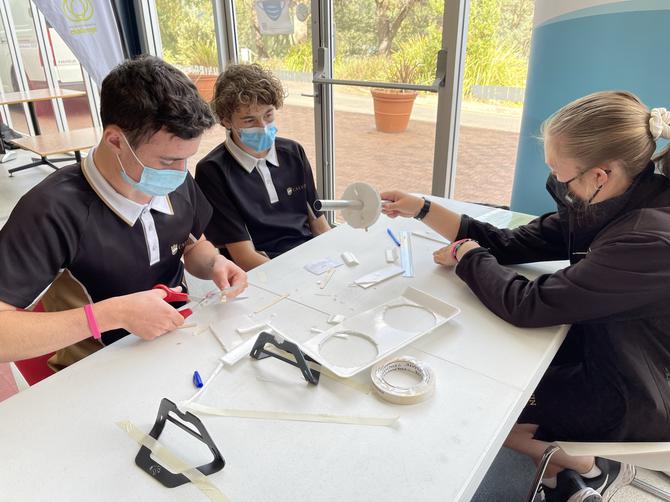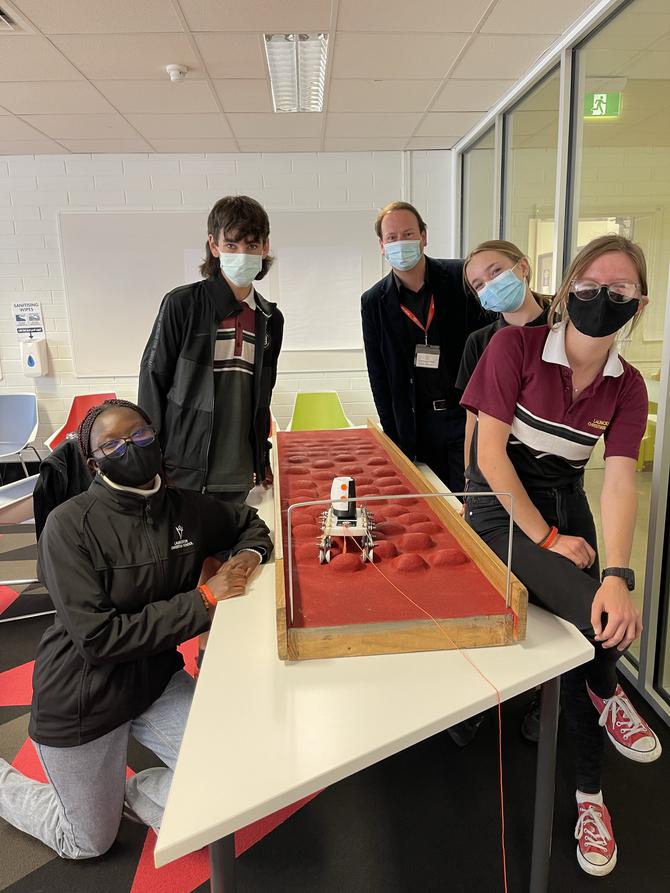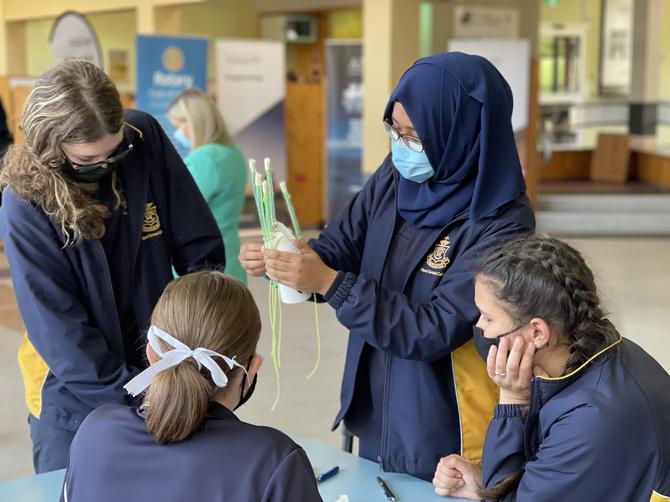After conquering their regional heats, five teams of aspiring scientists and engineers battled it out for top honours in the state final of a national competition held in Launceston on 11 April.
Launceston Christian School won the 2022 Science and Engineering Challenge with a final score of 1484.06.
They were followed by Mount Carmel College (1393.17), Calvin Christian School (1316.08), Kingston High School (1313.23), and St Virgil’s College (1123.62).

Students take part in a range of hands-on activities
The event aims to inspire Year 9 and 10 students to consider pursuing a career in a STEM (science, technology, engineering and mathematics) field by immersing them in fun, hands-on activities.
Students were challenged to create a cost-effective bionic hand, economically power up a pretend city, design apartment towers that can withstand an earthquake, build a model water turbine or a Mars Buggy.
Others developed transport networks that linked towns, designed codes to send messages along fibre optic rods, or built a bridge to carry gold ingots across a ravine.
The challenge culminates in a bridge-breaking finale where increasing amounts of gold ingots are rolled across student-engineered bridges to test their resilience.It was a milestone event for State Coordinator Susie Haley, who has been delivering the program to more than 17,000 Tasmanian high school students for the past 12 years. She was inducted into the Science and Engineering Hall of Fame for coordinating her 100th event in Hobart on 1 April.
Mrs Haley said she was delighted to also visit Rosebery District High School for the first time this year, giving students in Grades 3 – 10 the opportunity to take part in a full day of STEM activities.
We know that students, particularly those starting on their STEM journey, need to see examples of what they aspire to be and the pathway that leads to achieving those goals.
“The Science and Engineering Challenge lays the foundation for those pathways by encouraging students to choose maths, biology, physics and chemistry in years 11 and 12.”

Students put their Mars Buggy through its paces
College of Sciences and Engineering Executive Dean, Terry Bailey, said growing the state’s STEM capacity was a strategic priority for the University of Tasmania.
“We need more scientists and engineers to help tackle issues such as climate change, protecting our endangered species and driving our technological future. There is no better place to develop those skills than right here in Tasmania,” Mr Bailey said.
“At the University, we want to help transform Tasmania by growing STEM literacy and the community’s understanding of its importance. We are proud to support the Science and Engineering Challenge and the critical role it plays in engaging our bright young scientists, engineers and problem solvers.”

Designing a bionic hand
The event could not happen without the assistance of dedicated volunteers, 70 per cent of whom have a STEM background and give an average of 2,000 hours each year to ensure the challenge runs smoothly.
The Science and Engineering Challenge is presented by the University of Newcastle, in partnership with The University of Tasmania, Tasmanian Government, Rotary Clubs of Tasmania and TasWater.
